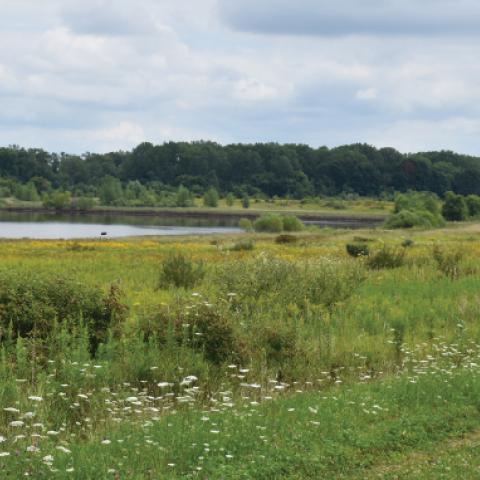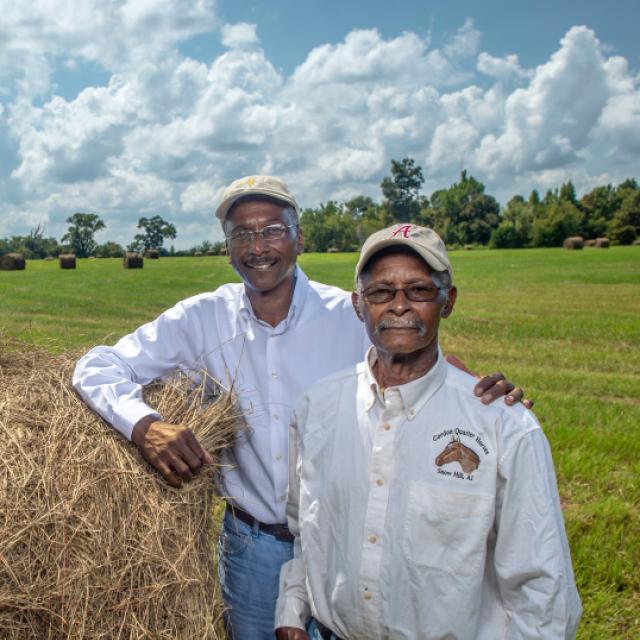
Press Release

The Agricultural Conservation Easement Program (ACEP) helps landowners, land trusts, and other entities protect, restore, and enhance wetlands or protect working farms and ranches through conservation easements.
Agricultural Land Easements help private and tribal landowners, land trusts, and other entities such as state and local governments protect croplands and grasslands on working farms and ranches by limiting non-agricultural uses of the land through conservation easements.
Agricultural Land Easements protect the long-term viability of the nation’s food supply by preventing conversion of productive working lands to non-agricultural uses. Land protected by agricultural land easements provides additional public benefits, including environmental quality, historic preservation, wildlife habitat and protection of open space. Additionally, ALE easements leverage local partnerships to match NRCS funding and local partners are responsible for the long-term stewardship of the easement.
Land eligible for agricultural easements includes private or Tribal land that is agricultural land, cropland, rangeland, grassland, pastureland and nonindustrial private forest land. NRCS will prioritize applications that protect agricultural uses and related conservation values of the land and those that maximize the protection of contiguous acres devoted to agricultural use, including land on a farm or ranch.
Eligible land types which also meets one of the four following land eligibility criteria:
NRCS provides financial assistance to eligible partners for purchasing Agricultural Land Easements that protect the agricultural use and conservation values of eligible land.
For working farms, the program helps farmers and ranchers keep their land in agriculture. Under the Agricultural Land Easement component, NRCS may contribute up to 50 percent of the fair market value of the agricultural land easement.
The program also protects grazing uses and related conservation values by conserving grassland, including rangeland, pastureland and shrubland. Where NRCS determines that grasslands of special environmental significance will be protected, NRCS may contribute up to 75 percent of the fair market value of the agricultural land easement.
Agricultural Land Easements are permanent or for the maximum term allowed by law.
Visit the following websites to learn how to find an eligible partner to hold conservation easements.
Farmland Protection Directory
Land Trust Alliance
Wetlands Reserve Easements help private and tribal landowners protect, restore and enhance wetlands which have been previously degraded due to agricultural uses.
Wetland Reserve Easements provide habitat for fish and wildlife, including threatened and endangered species, improve water quality by filtering sediments and chemicals, reduce flooding, recharge groundwater, protect biological diversity, and provide opportunities for educational, scientific and limited recreational activities.
Eligible landowners include:
Land eligible for wetland reserve easements includes privately held farmed or converted wetland that can be successfully and cost-effectively restored. NRCS will prioritize applications based the easement’s potential for protecting and enhancing habitat for migratory birds and other wildlife.
To enroll land through wetland reserve easements, NRCS enters into purchase agreements with eligible private landowners or Indian tribes that include the right for NRCS to develop and implement a Wetland Reserve Plan of Operations (WRPO). This plan will detail practices to help restore, protect and enhance the wetlands functions and values.
Wetland Reserve enrollment options include:
For all Wetland Reserve Easements options, NRCS pays all costs associated with recording the easement in the local land records office, including recording fees, charges for abstracts, survey and appraisal fees and title insurance.
Learn more about the Wetland Reserve Enhancement Partnership (WREP).
Landowners - to learn more about both ALE and WRE, contact your local NRCS office. An NRCS conservationist will visit you and evaluate your land to help you determine eligibility for the various components of ACEP. If your land is eligible for ALE and you are looking for an eligible entity to hold your conservation easement; please visit
ACEP-ALE for Landowners (farmlandinfo.org)
Eligible Entities - to learn more about Agricultural Land Easements, please contact your NRCS state office programs staff to inquire about how you can partner with NRCS to enroll conservation easements on eligible land.
ACEP-ALE for Entities (farmlandinfo.org)
Over the past 28 years, NRCS has worked with landowners to protect more than 5 million acres of wetlands and agricultural lands, a value of over a billion dollars in a diversified real estate portfolio that has resulted in improved soil health, improved water and air quality, protection and enhancement of wildlife habitat, and increased food security through protecting the long-term viability of our nation’s best agricultural lands.
David Gundlach, Assistant State Conservationist for Easement Programs
david.gundlach@usda.gov
(608) 662-4422, ext. 252
Contact your local service center to start your application.
Do you farm or ranch and want to make improvements to the land that you own or lease?
Natural Resources Conservation Service offers technical and financial assistance to help farmers, ranchers and forest landowners.

To get started with NRCS, we recommend you stop by your local NRCS field office. We’ll discuss your vision for your land.
NRCS provides landowners with free technical assistance, or advice, for their land. Common technical assistance includes: resource assessment, practice design and resource monitoring. Your conservation planner will help you determine if financial assistance is right for you.
We’ll walk you through the application process. To get started on applying for financial assistance, we’ll work with you:
Once complete, we’ll work with you on the application, or CPA 1200.
Applications for most programs are accepted on a continuous basis, but they’re considered for funding in different ranking periods. Be sure to ask your local NRCS district conservationist about the deadline for the ranking period to ensure you turn in your application in time.
As part of the application process, we’ll check to see if you are eligible. To do this, you’ll need to bring:
If you don’t have a farm number, you can get one from USDA’s Farm Service Agency. Typically, the local FSA office is located in the same building as the local NRCS office. You only need a farm number if you’re interested in financial assistance.
NRCS will take a look at the applications and rank them according to local resource concerns, the amount of conservation benefits the work will provide and the needs of applicants. View Application Ranking Dates by State.
If you’re selected, you can choose whether to sign the contract for the work to be done.
Once you sign the contract, you’ll be provided standards and specifications for completing the practice or practices, and then you will have a specified amount of time to implement. Once the work is implemented and inspected, you’ll be paid the rate of compensation for the work if it meets NRCS standards and specifications.